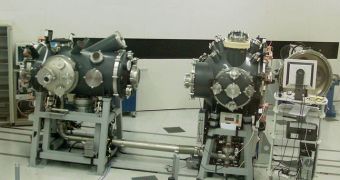An international group of researchers announce the development of a new generation of high-energy, synchrotron X-ray sources, which are so small that they can be used on a scientific lab bench.
Tightly-focused X-ray beams are of paramount importance in science today, as they are widely employed in a variety of practical applications.
These range from analyzing the integrity of aircraft wings to studying molecules, and researchers need to be able to produce the radiation at will, if they want any chance of progress in this area.
The newly-announced tabletop instrument promises to be the answer to this need. The team that created it features investigators from the Imperial College London, in the United Kingdom, the University of Michigan, and also from the Instituto Superior Téchnico Lisbon, in Portugal.
Writing in the October 24 issue of the esteemed scientific journal Nature, the scientists say that the new approach to producing X-ray will result in increasingly precise investigations at larger resolutions.
“This is a very exciting development. We have taken the first steps to making it much easier and cheaper to produce very high energy, high quality X-rays,” says expert Dr Stefan Kneip.
“Extraordinarily, the inherent properties of our relatively simple system generates, in a few millimeters, a high quality X-ray beam that rivals beams produced from synchrotron sources that are hundreds of meters long,” the scientist adds.
“Although our technique will not now directly compete with the few large X-ray sources around the world, for some applications it will enable important measurements which have not been possible until now,” he goes on to say.
Kneip holds an appointment at the ICL Department of Physics, and he was also the lead author of the new investigation, Science Blog reports.
“We think a system like ours could have many uses. For example, it could eventually increase dramatically the resolution of medical imaging systems using high energy X-rays, as well as enable microscopic cracks in aircraft engines to be observed more easily,” adds Dr. Zulfikar Najmudin,
“It could also be developed for specific scientific applications where the ultrashort pulse of these X-rays could be used by researchers to 'freeze' motion on unprecedentedly short timescales,” he says.
Najmudin was the leader of the experimental ICL team from the Department of Physics. The experiments for the new work took place in the Center for Ultrafast Optical Science at the University of Michigan, in the United States.
“Our technique can now be used to produce detailed X-ray images. We are currently developing our equipment and our understanding of the generation mechanisms so that we can increase the repetition rate of this X-ray source,” Najmudin concludes.

 14 DAY TRIAL //
14 DAY TRIAL //